Seonyudonggyegok Valley (Sancheong Section) (선유동계곡(산청))
0m 9348 2022-08-10
Suwol-ro, Sancheon-gun, Gyeongsangnam-do
+82-55-970-7205
Seonyudong means the place where fairies come down from heaven to play. It has been said that fairies would often come down to the valley to make liquor and store them in flagons. There are some leftover depressions in the boulders which demonstrate there may be some truth to the legend.
Near Seonyudonggyegok Valley, they say that the bamboos and pine trees stay green all year long and wood nymphs fly down to play with each other under the Suwolpokpo Falls in Suwol Village.
Jeongchwiam Hermitage (정취암)
3.0 Km 26272 2024-02-23
675-87 Duncheolsan-ro, Sindeung-myeon, Sancheong-gun, Gyeongsangnam-do
Jeongchwiam Hermitage is a temple perched on the rocky cliffs of Daeseongsan Mountain, celebrated as a prime location for witnessing both sunrise and sunset, each offering breathtaking views. Nestled amidst picturesque mountain landscapes, the temple is cherished by many for its serene surroundings. Nearby attractions include the Duncheol Ecological Park and Seonyudonggyegok Valley, both serving as captivating natural destinations for tourists.
Sancheongyulsuwon [Korea Quality] / 산청율수원 [한국관광 품질인증]
5.6 Km 13079 2020-09-10
36, Sindeunggahoe-ro Sindeung-myeon, Sancheong-gun, Gyeongsangnam-do
+82-55-974-0221, +82-10-9802-1132
Sancheong Yulsuwon was opened in October 2013 as traditional hanok accommodations to provide guests comfort and relaxation in nature. It was named after the expression from “Decade of Wen Wang” of the Classics of Poetry (the oldest existing collection of Chinese poetry), meaning “Following the virtue of ancestors, one should cultivate one’s mind,” in the hope that guests can experience traditional Korean culture in hanok and learn common themes and cultivate virtues in life. Located at the hanok street in Sancheong County, Gyeongsangnam-do Province, Sancheong Yulsuwon is a hanok stay facility established by Korea’s major education company JEI Corporation. It was built by expanding and renovating the Old House of Suncheon Park’s Clan for over four years. It is not only a hanok cultural facility but also an educational facility that aims to provide visitors comfortable relaxation and to establish a sound, rich environment of educational culture, which is also the philosophy of JEI Corporation. It is located around the Dumulmeori area where Dangyecheon Stream and Sindeungcheon Stream -- the water branch of Hwangmaesan Mountain (1,108m above sea level) -- meet. The area is known for many houses of noble families situated in a propitious site combined with mountains and water and as a hanok village with the old stone wall, which was designated as a cultural heritage. Among them, Sancheong Yulsuwon is an outstanding hanok structure built on a total area of about 2,975m2 according to the theory of divination based on topography.
Entering the main gate Yeongsumun, one sees the Anchae (inner house) situated in front, the outer Sarangchae (detached building) on the right, and the bathroom on the left. Then, there are the inner Sarangchae, the kitchen, and the pavilion around the vegetable garden and the pond. The arrangement of buildings has special meaning: the kitchen signifies a green dragon (east), the bathroom, a white tiger (west), the inner Sarangchae, an Ansan (a low and small mountain in front of the house), and the outer Sarangchae and the main gate, a Josan (a high mountain behind Ansan); these five buildings seem to embrace the Anchae. As for the special names of the buildings, the inner Sarangchae built with the splendid style of semi-hipped roof and double eaves was named “Nongam,” meaning “a thatched cottage of a skilled farmer”; the outer Sarangchae was named “Goheon,” meaning “an old sarangchae,” and the Anchae -- named “Hagyejae” meaning “modesty” -- is situated in the innermost area. In particular, its upper floor (numaru) offers an open view of the environment. The bathroom, which was named “Seoljodang” meaning “one should keep the mind and body clean,” is composed of two connected houses. It is also equipped with red clay sauna and jjimjilbang (Korean dry sauna).
Sancheong Yulsuwon was built based on a traditional hanok style of the Yeongnam area, with a splendid Seoul style of modernity added to the design. The sunshine comes through the windows made of hanji (Korean paper) in the clean and cozy rooms. Guests can also enjoy the outside view from the windows, which show the typical scenery of hanok consisting of jars, trees, flowers, and low stone wall with tiled roof. Every room is equipped with a bathroom including a bathtub and a modern-style kitchen. Sancheong Yulsuwon is adjacent to various tourist attractions including the following: valley of Daewonsa Temple surrounded by Geumgang pine trees; Namsa Yedamchon village, a village with an old wall made of red clay and stones; and Jeongchiwam Hermitage, Traditional Buddhist Temple No. 83 built by Silla’s Buddhist monk Uisang (625-702) and where the Buddhist Painting of Mountain Spirit can be found.
Suseonsa Temple (수선사)
7.5 Km 0 2024-02-23
1117 Nae-ri, Sancheong-eup, Sancheong-gun, Gyeongsangnam-do
Suseonsa Temple is a temple situated on Ungseokbong Peak in Jirisan Mountain. Renowned for its picturesque hydrangea and lotus, it has become a favored destination for many visitors. The temple offers a temple stay program, allowing participants to restore both body and mind. Nearby, the café run by Suseonsa Temple provides a pleasant retreat, adding to the enjoyment of visitors' experiences.
Baegundonggyegok Valley, Sancheong (백운동계곡(산청))
10.2 Km 7508 2019-12-19
Baegun-ro 51beon-gil, Danseong-myeon, Sancheong-gun, Gyeongsangnam-do
+82-55-970-6421~3
If you go 5 km up along the valley at Baegam-ri, under the thick woods, you will find a 180 square meter long stone named ‘Jeomjeong Rock’ and a small waterfall. This valley is Baegundonggyegok Valley. For almost 6 km, the water of the valley flows over only rocks, with over twenty large and small falls and lakes. Large stones in the valley are gorgeous because the stones are washed with sunbeams and the strong current of water. The most famous falls are Baeunpokpo Waterfall and Odampokpo Waterfall. Strong current of water flows in Deungcheondae, where the letters ‘Yeongnamjeilcheonsok’ are carved. Baegundonggyegok Valley is a clean area due to maintenance of the clean natural environment. Many tourists visit here because the valley is decorated with azaleas in the spring and it is cool in the summer.
Yedamwon (예담원)
10.9 Km 6727 2024-02-23
10-4 Jirisan-daero 2897beon-gil, Danseong-myeon, Sancheong-gun, Gyeongsangnam-do
Yedamwon is a traditional Korean restaurant situated in Namsa Yedamchon Village, near the entrance of Jirisan Mountain. The highlight of the menu, Maehwa jeongsik (maehwa set menu), features a delightful array of local dishes, including suyuk (boiled pork slices), saengseon gui (grilled fish), and dotorimuk muchim (acorn jelly salad). Renowned for its commitment to organically grown ingredients and the use of natural seasonings, such as green plum extract and gamsikcho (persimmon vinegar), the restaurant attracts numerous visitors seeking an authentic culinary experience.
Namsa Yedamchon Village (남사예담촌)
11.0 Km 61488 2024-02-28
10 Jirisan-daero 2897beon-gil, Danseong-myeon, Sancheong-gun, Gyeongsangnam-do
Namsa Yedamchon Village is situated at the foot of Jirisan Mountain. It is a traditional hanok village renowned for its history as the birthplace of accomplished scholars, adding to the region's rich scholarly tradition. This meticulously preserved village boasts ancient hanok houses, venerable trees, and historic walls. Beyond its significance as a center for traditional culture, the picturesque village also offers experiential programs, including the opportunity to wear hanbok and engage in traditional games.
Daewonsagyegok Valley (대원사계곡)
12.4 Km 46018 2021-02-24
Samjang-myeon, Sancheong-gun, Gyeongsangnam-do
+82-55-970-7201
Daewonsagyegok Valley is a place where one can be appreciate nature's musical harmony of stream water, wind brushing against the leaves, and the chirping of birds. The nearly 12-kilometer-long Daewonsagyegok Valley's stream water originates from the highest peak of Jirisan Mountain called Cheonwangbong Peak, and flows through Jungbong and Habong Peaks, as well as Ssukbatjae Pass, Saejae Pass, Wangdeungjae Pass, Bammeorijae Pass, and Ungseokbong Peak. Before reaching the valley, the water joins the currents from Sinbatgol, Jogaegol, and Bambatgol Valleys. The volume of water increases as it passes Saejae and Oegok Village and reaches Yupyeong-ri where Daewonsa Temple is located. The incessant sound of running water fills the silence of the forest as if Buddhist nuns were chanting blessings.
Hwangmaesan County Park (황매산군립공원)
12.5 Km 9887 2021-08-18
4, Hwangmaesangongwon-gil, Hapcheon-gun, Gyeongsangnam-do
+82-55-930-4752
Located at the border between Gahoe-myeon and Daebyeong-myeon of Hapcheon, Hwangmaesan Mountain has long been considered a guardian mountain of Hapcheon, but was rarely ever featured in hiking or tourist publications. Thanks to this, the mountain's natural environment has been kept in pristine condition. In 1983, the mountain was designated as a county park and now, along with Gayasan Mountain, it is regarded as one of the major mountains in Hapcheon. Hwangmaesan Mountain is one of the last mountain peaks of the Taebaek Mountain Range, and reaches an altitude of 1,113 meters. Pine trees and royal azalea decorate the rocky mountain. From the summit, hikers can see Hapcheonho Lake and Jirisan, Deogyusan, and Gayasan Mountains.
Sancheong Daewonsa Temple (대원사(산청))
12.7 Km 18168 2021-08-13
453, Pyeongchonyupyeong-ro, Sancheong-gun, Gyeongsangnam-do
+82-55-972-8068
Located at the eastern foot of Jirisan Mountain, Daewonsa Temple was first built in 548 during the Silla dynasty, but it remained closed for over thousand years until it was renovated and made bigger with the name Daewon. Unfortunately, the entire premises were lost to a big fire during the night of January 12, 1914, and all the halls and pavilions, including Yosachae, totaling 184 rooms in 12 buildings, were rebuilt in 1917. However, they were damaged once again during the Korean War and were abandoned until the war ended where the temple was rejuvenated and made even bigger. Located nearby are Geoyeonjeong and Gunjajeong Halls that are believed to have been the studying venue of scholars.
* Daewonsa Valley
The two-kilometer-long valley that stretches from the parking lot at the entrance to Daewon Temple to the temple itself is surrounded by high hills and curious-looking rocks. The clean water that oozes out through craters between the rocks generates unusual scenery. Associated with Yongso Pond is the legend that a dragon lived in it for hundreds of years before it finally flew away. Somakgol Valley is known to be the place where the last king of Garak Kingdom came to feed his cows and horses.
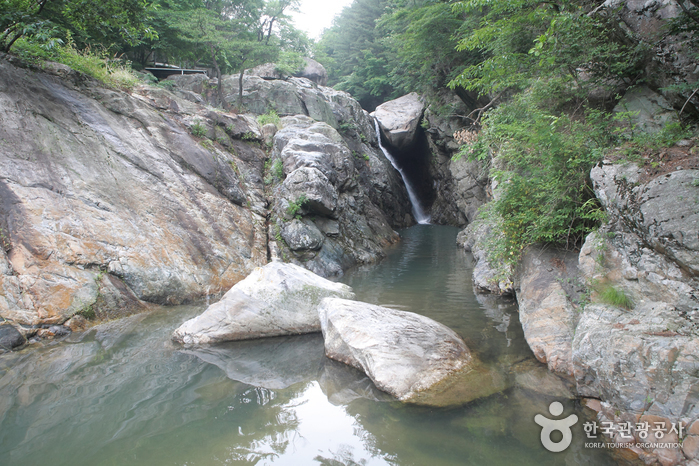
![Sancheongyulsuwon [Korea Quality] / 산청율수원 [한국관광 품질인증]](http://tong.visitkorea.or.kr/cms/resource/07/2631407_image2_1.jpg)

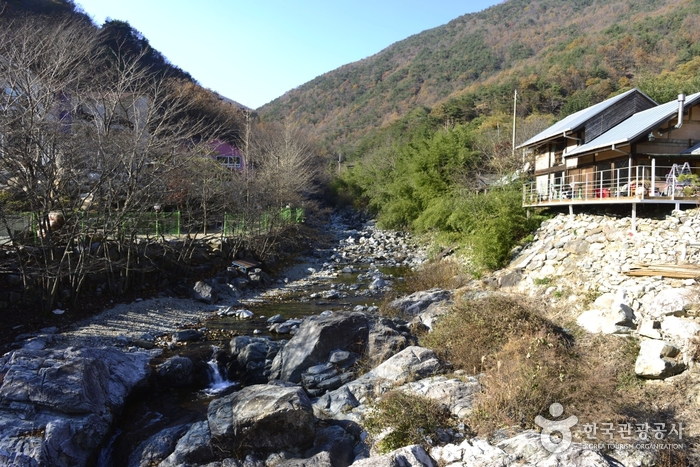
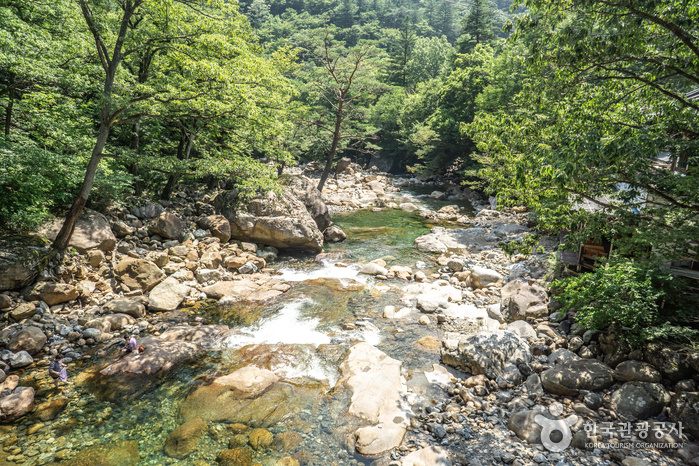
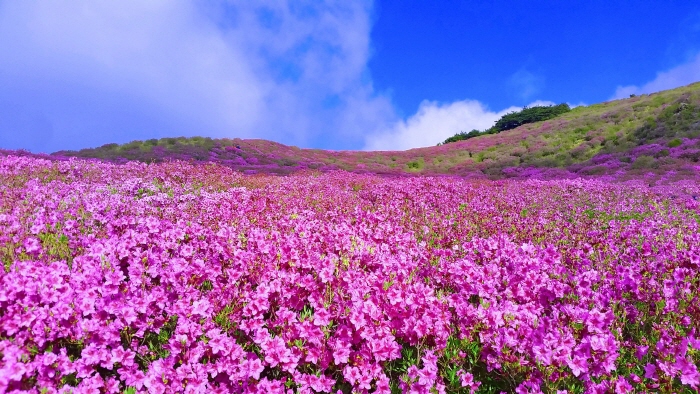
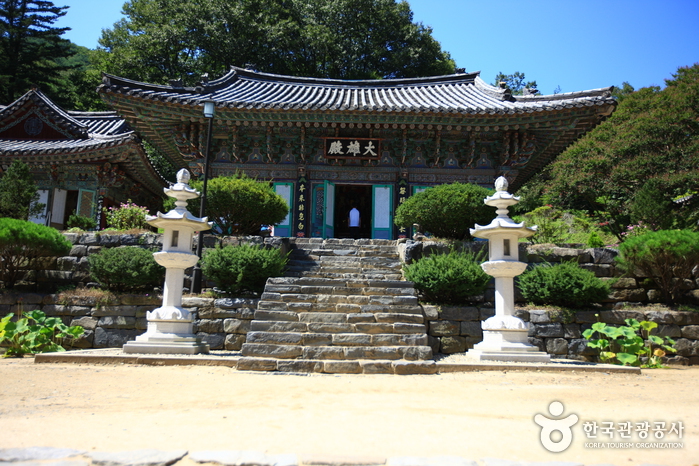
 English
English
 한국어
한국어 日本語
日本語 中文(简体)
中文(简体) Deutsch
Deutsch Français
Français Español
Español Русский
Русский